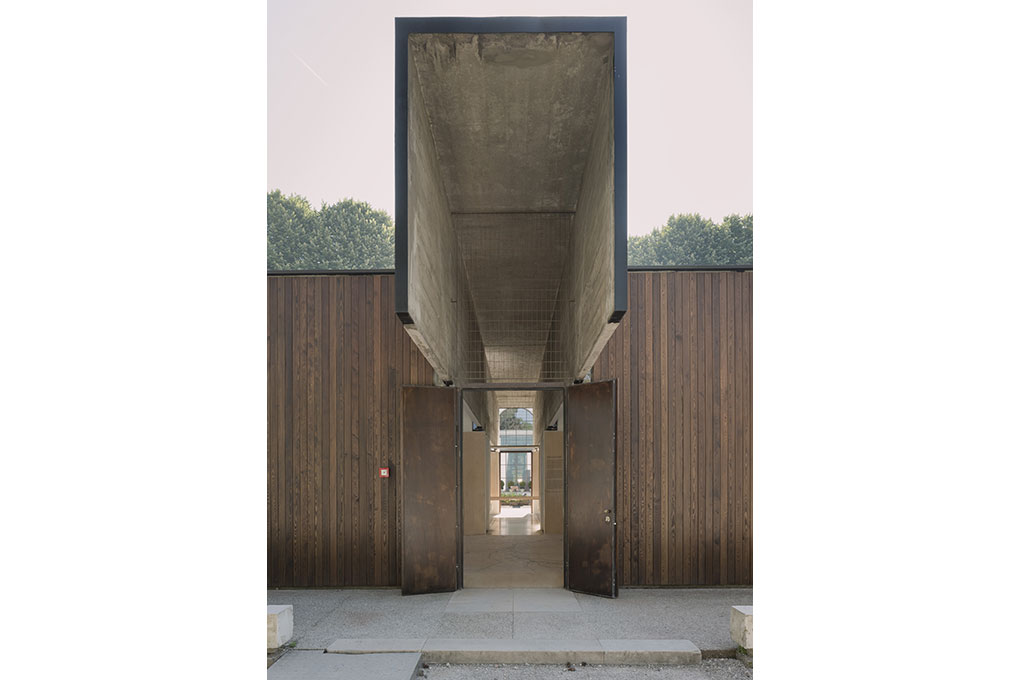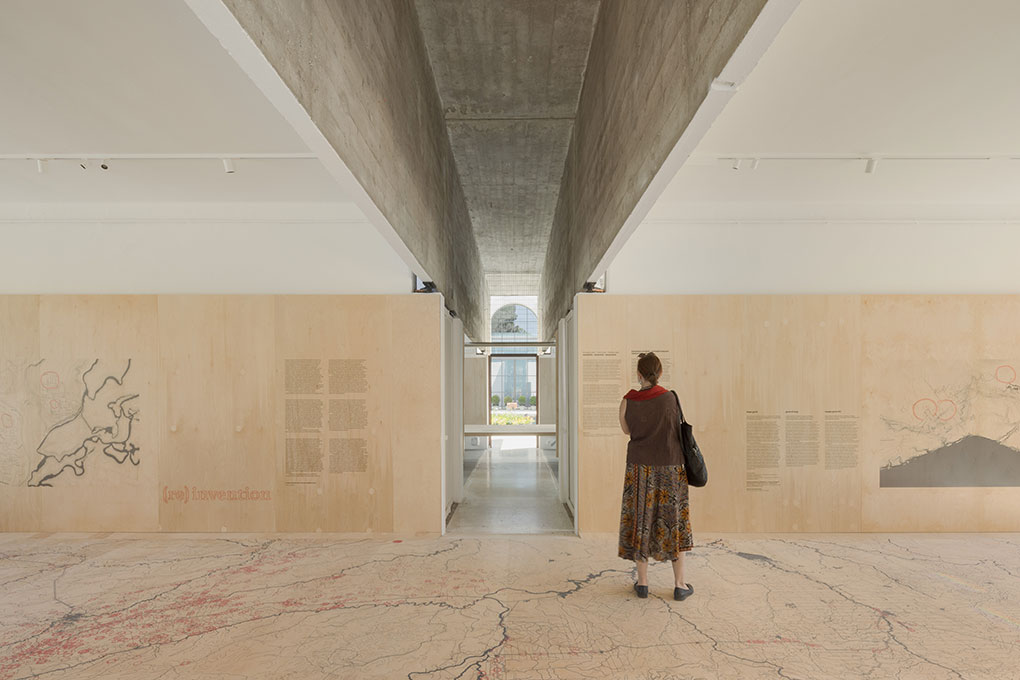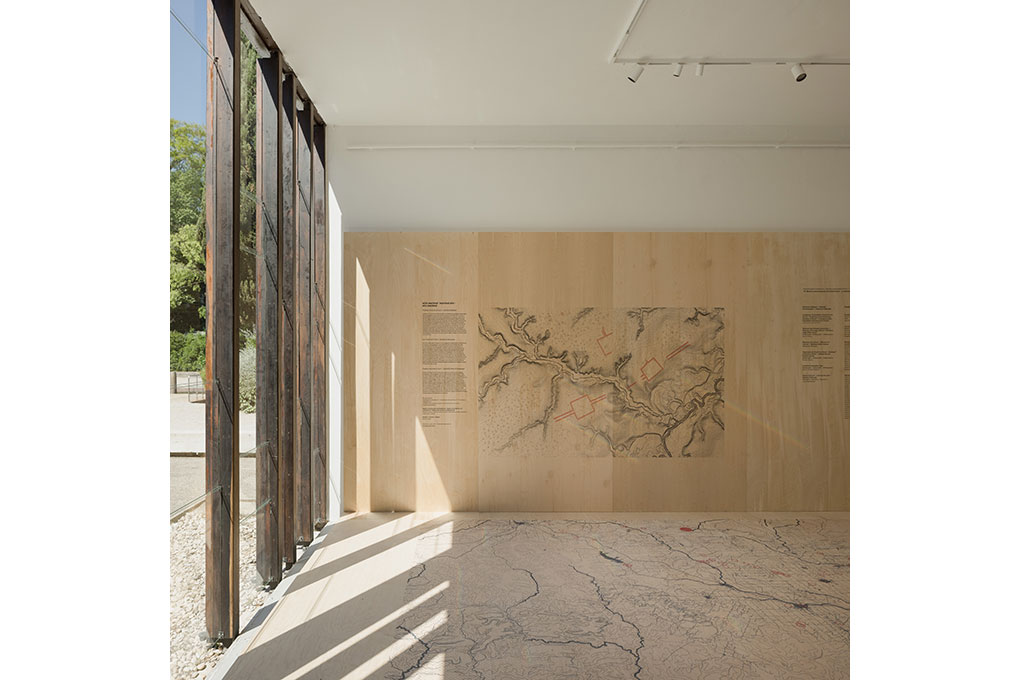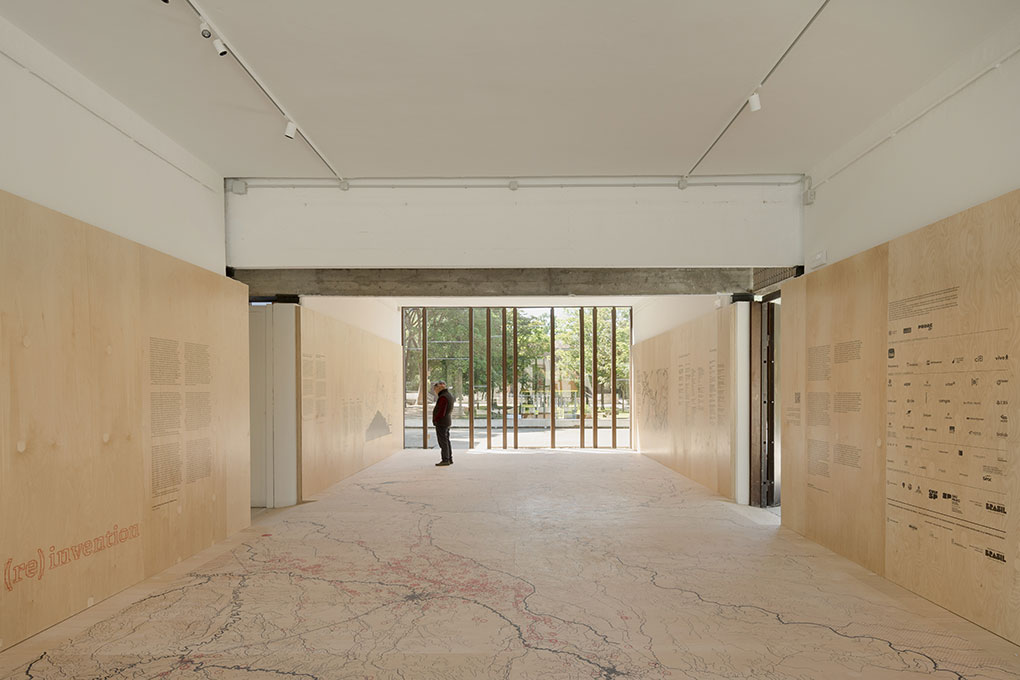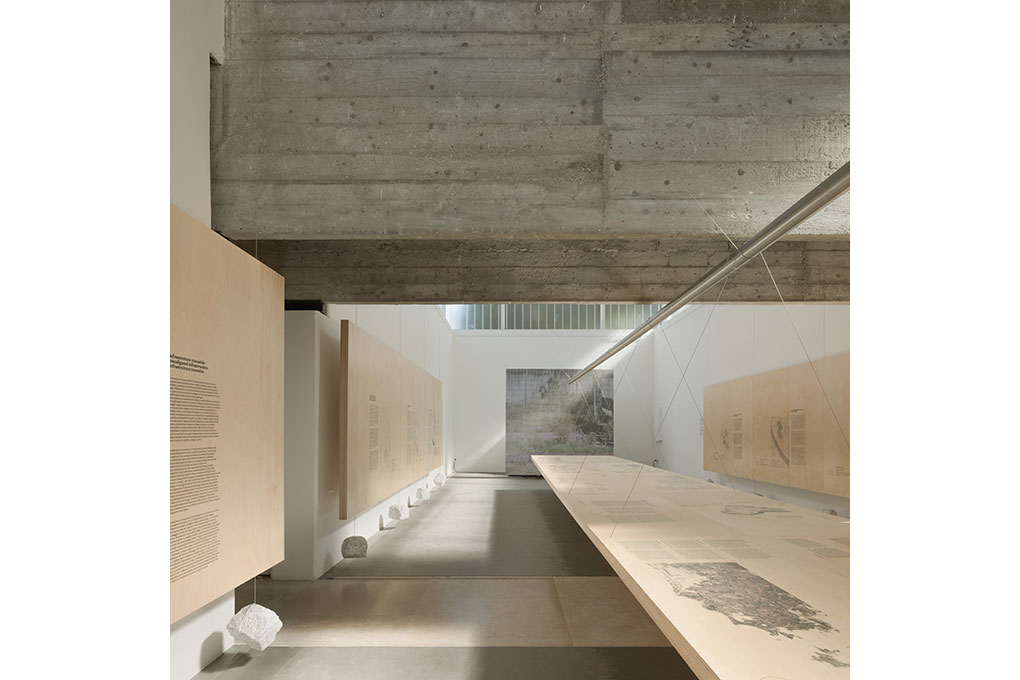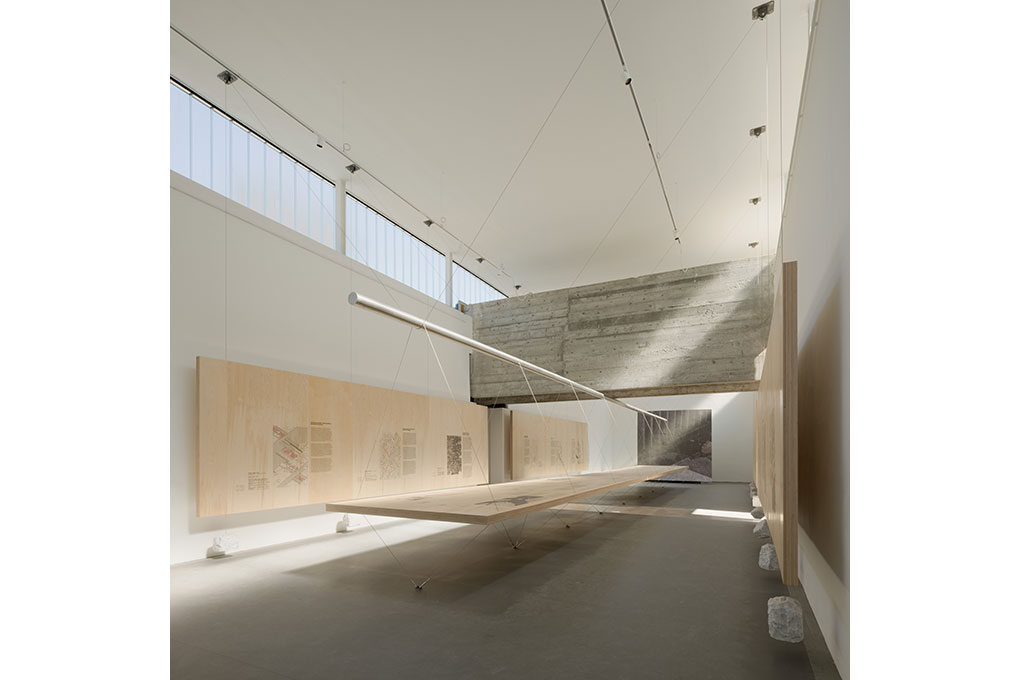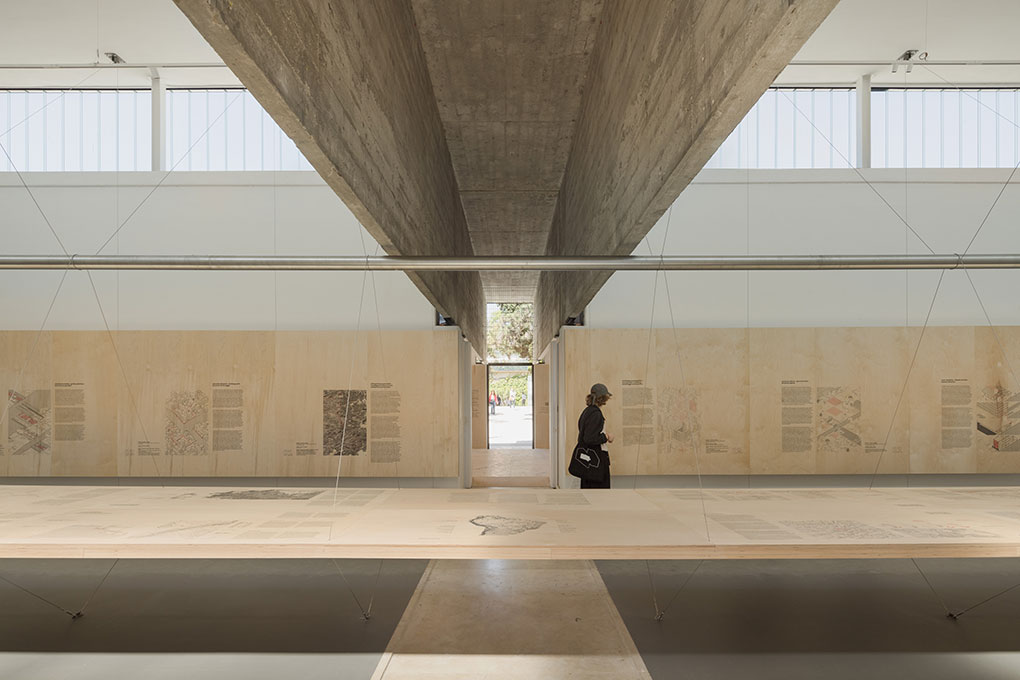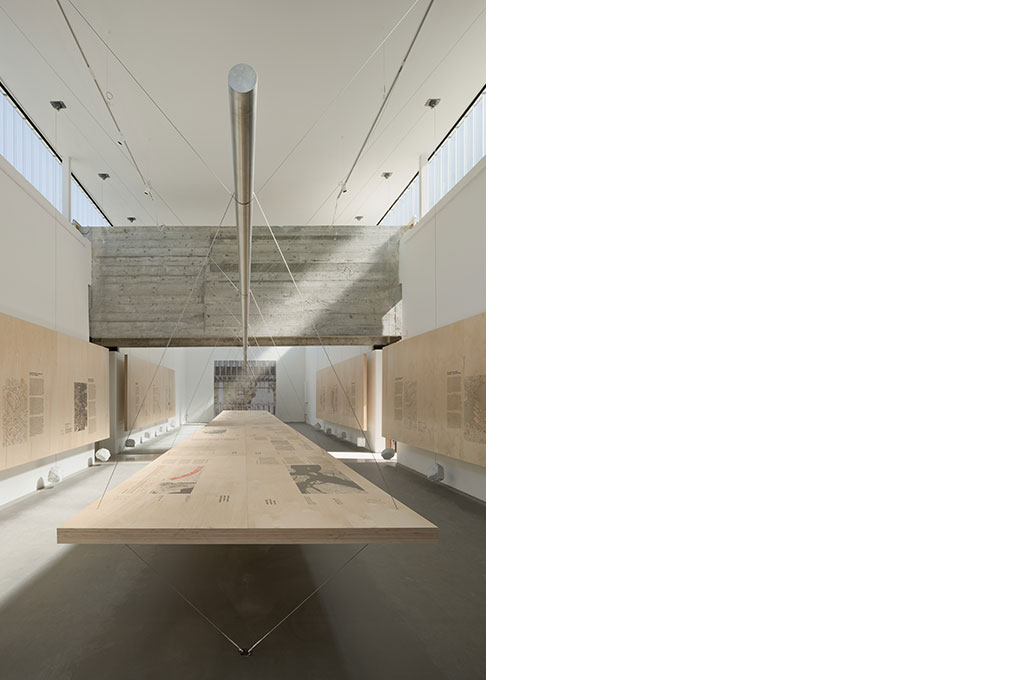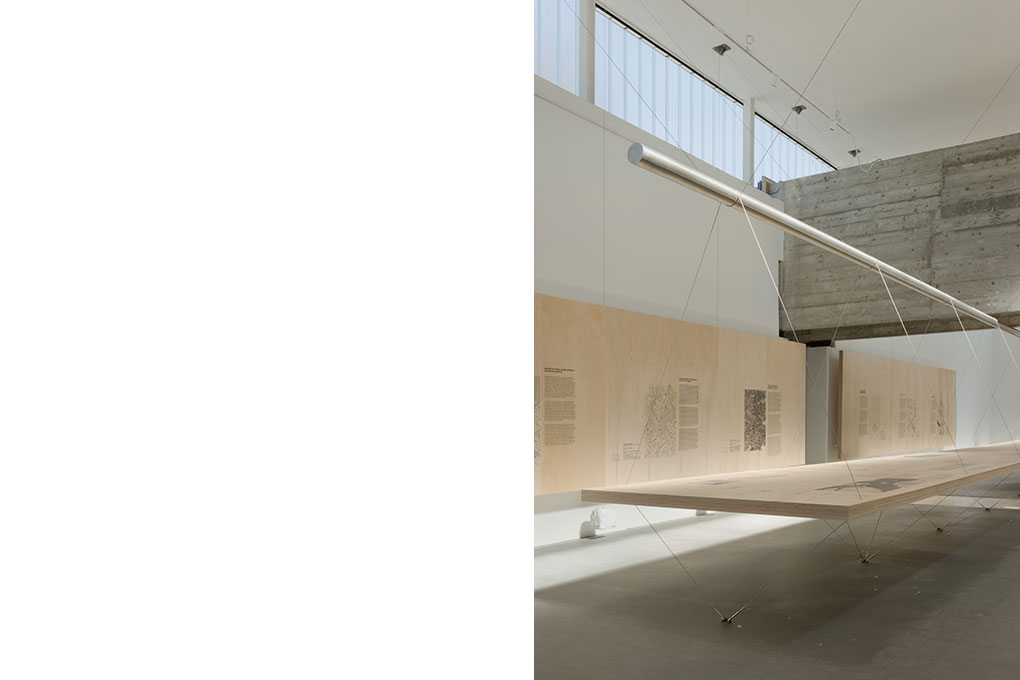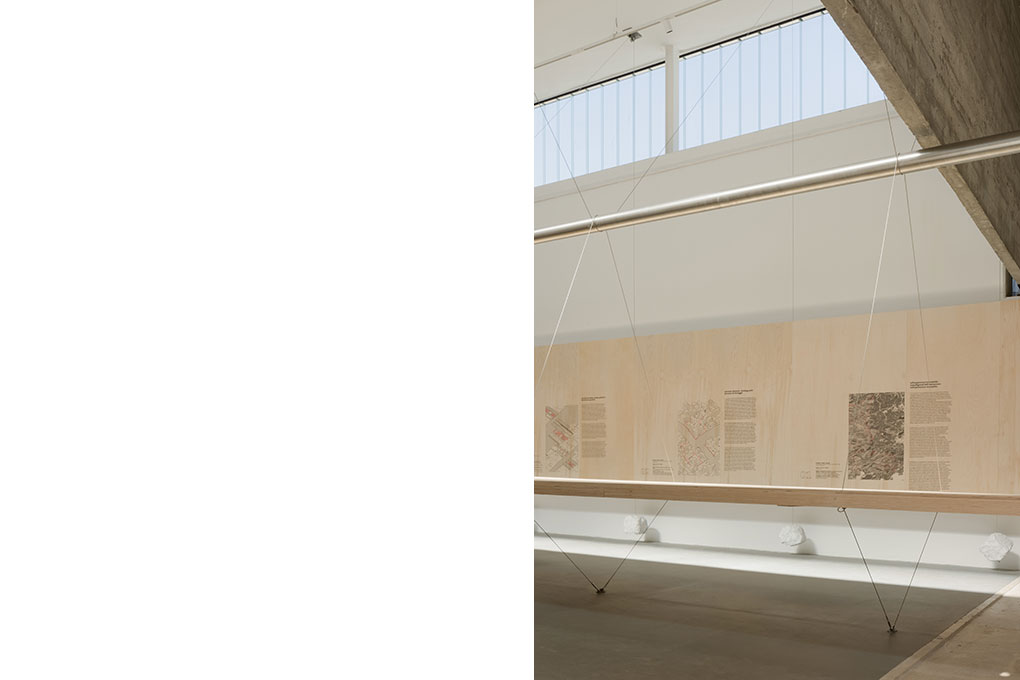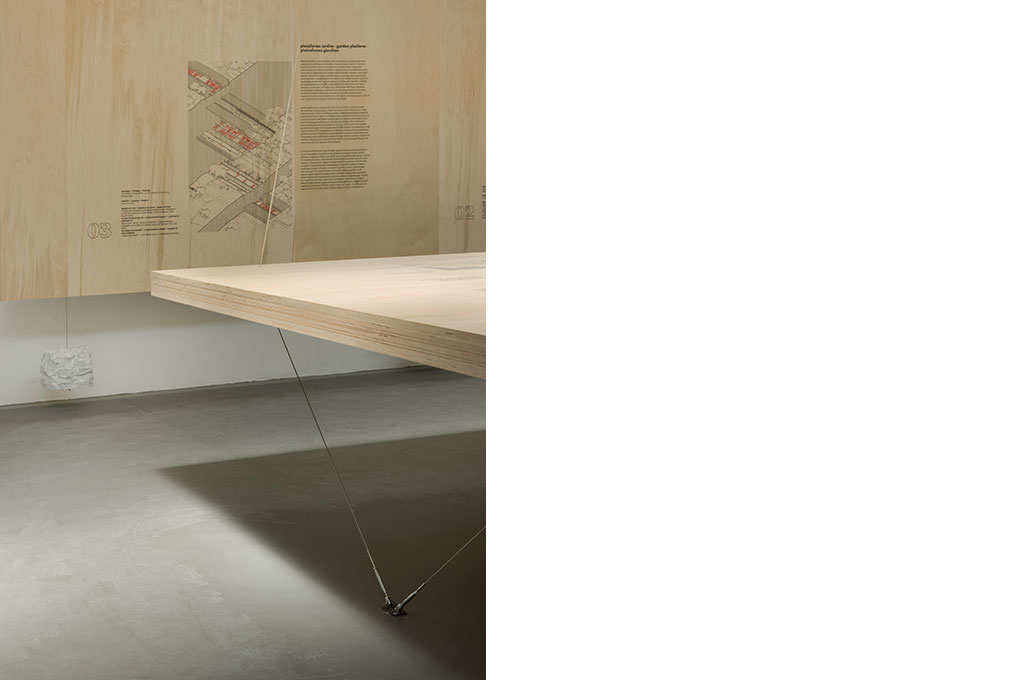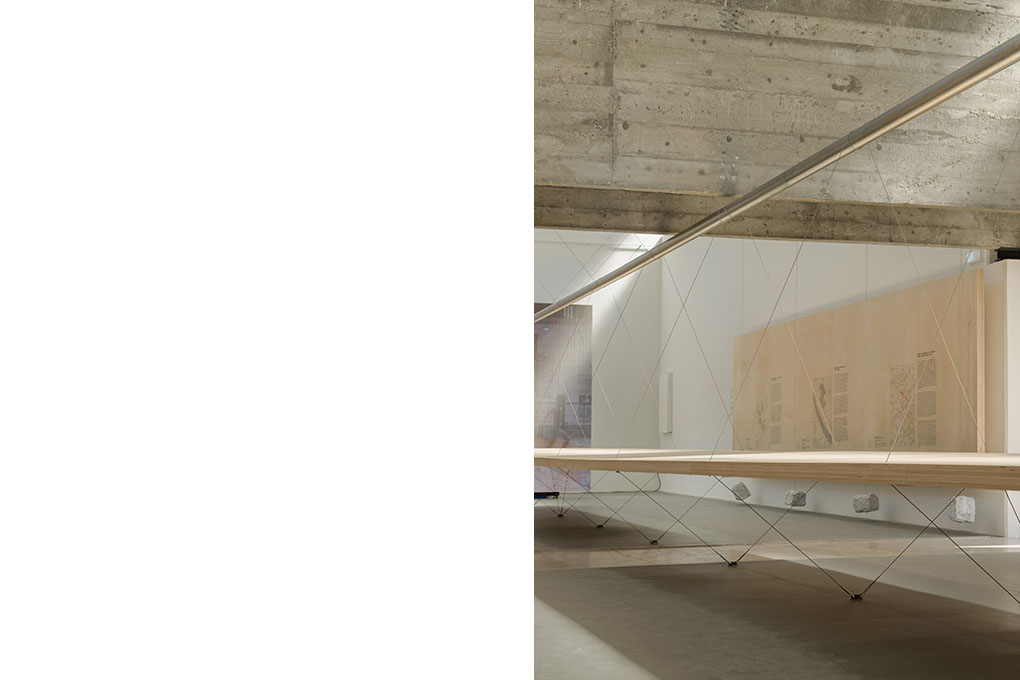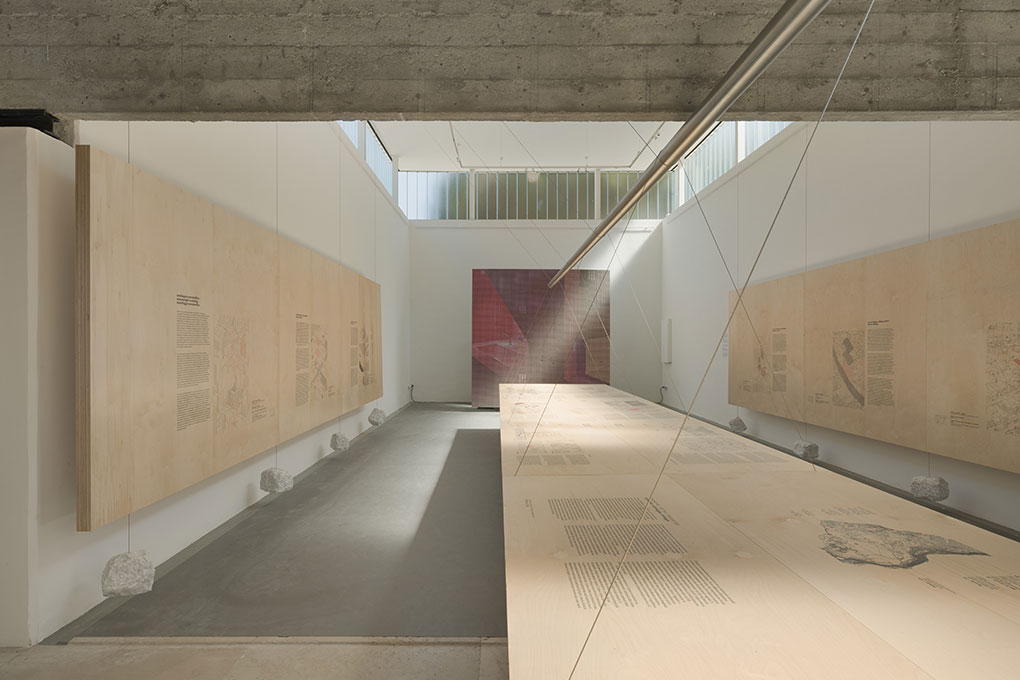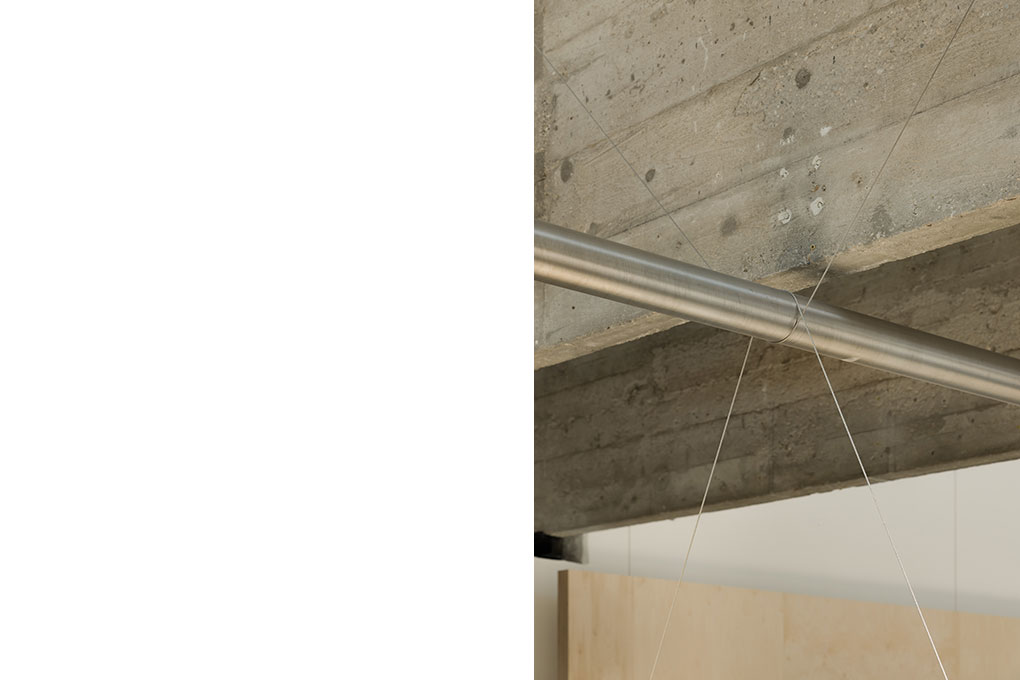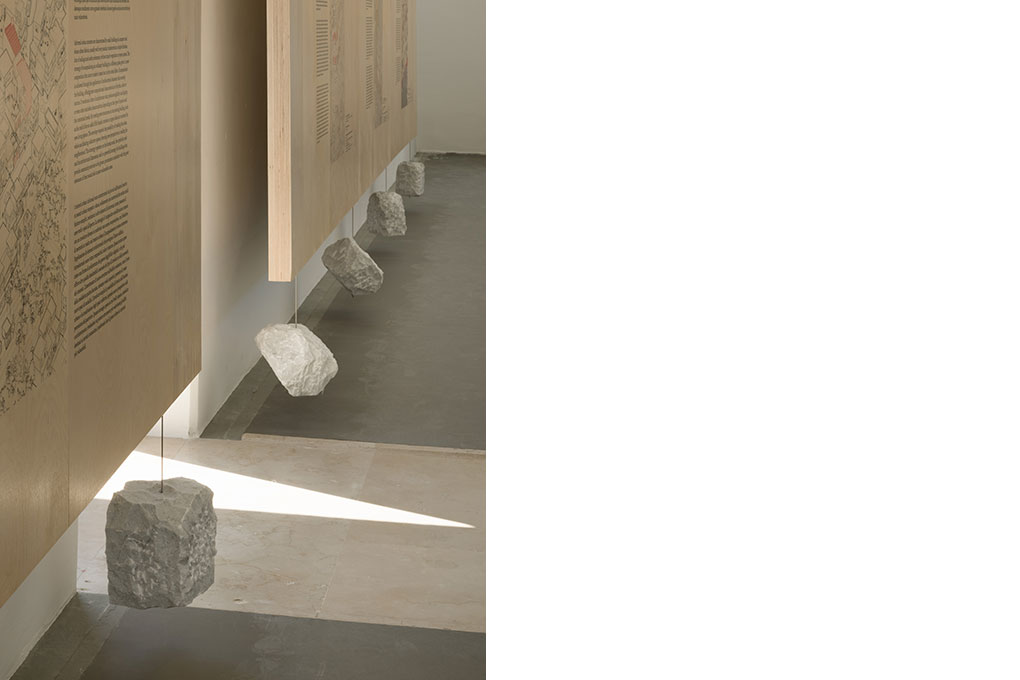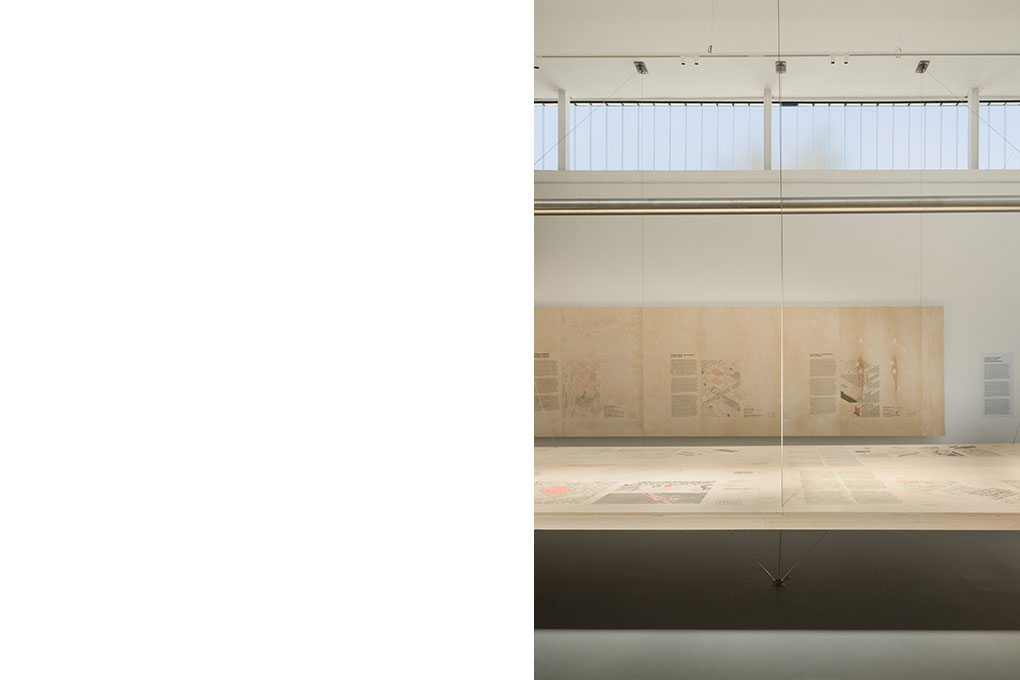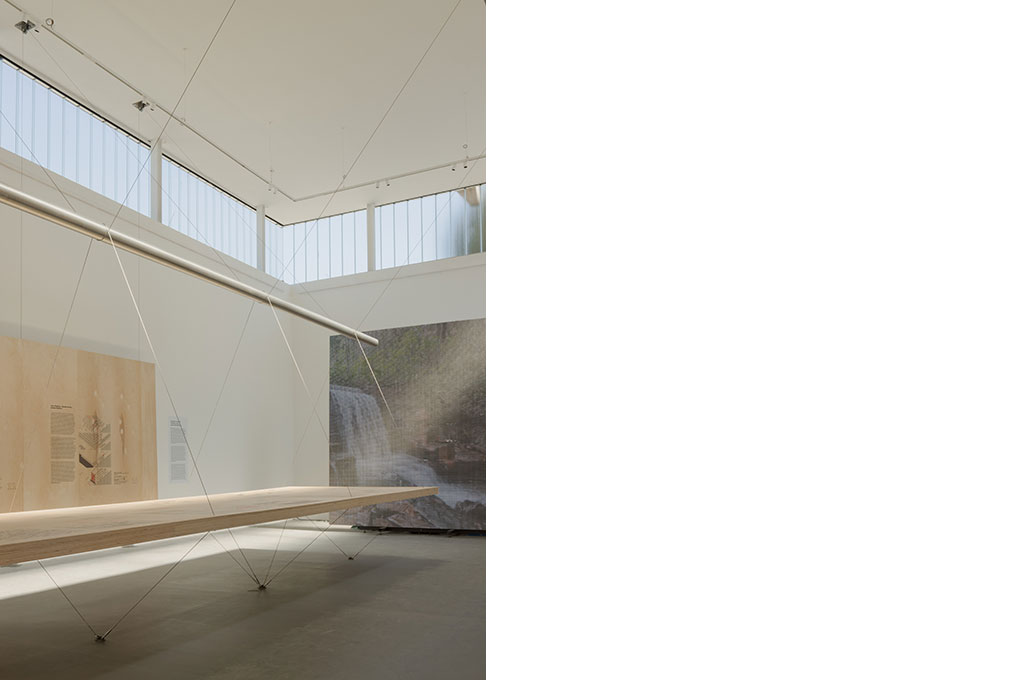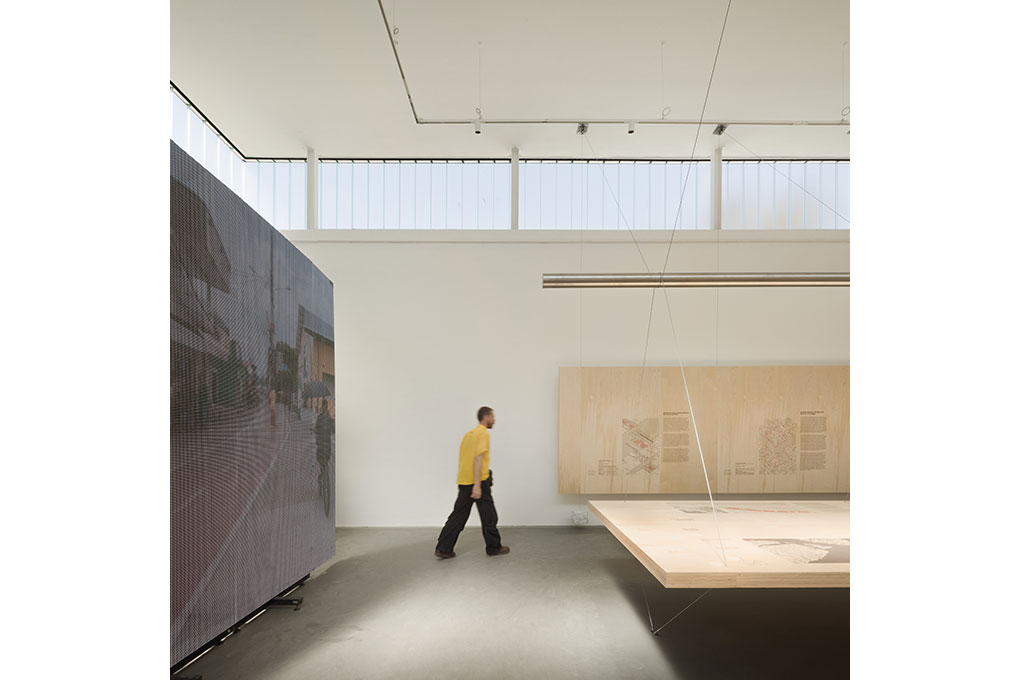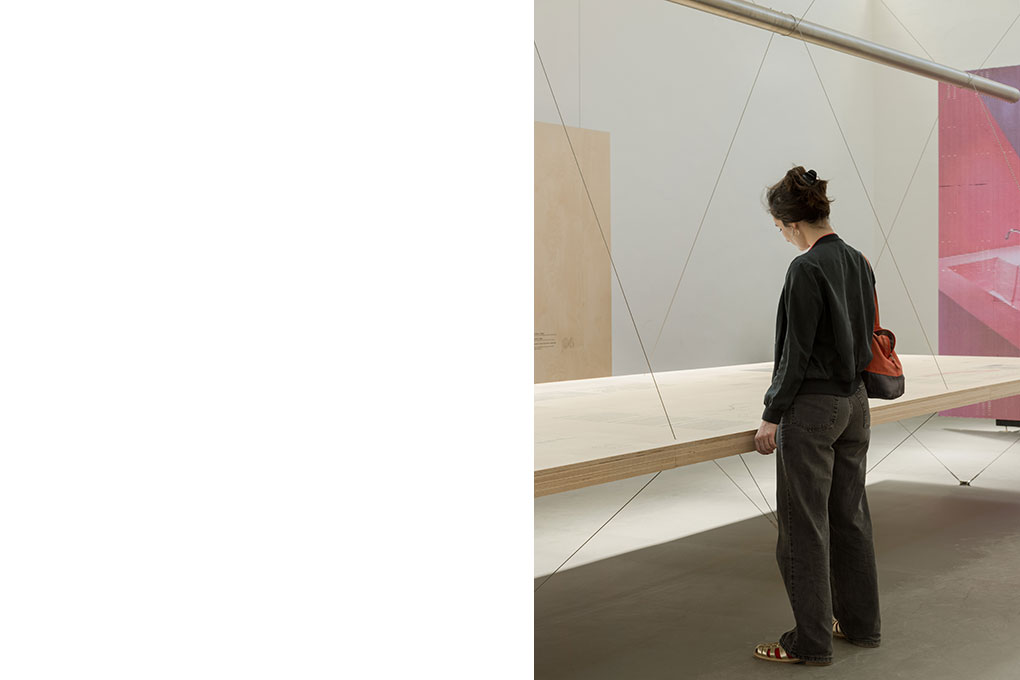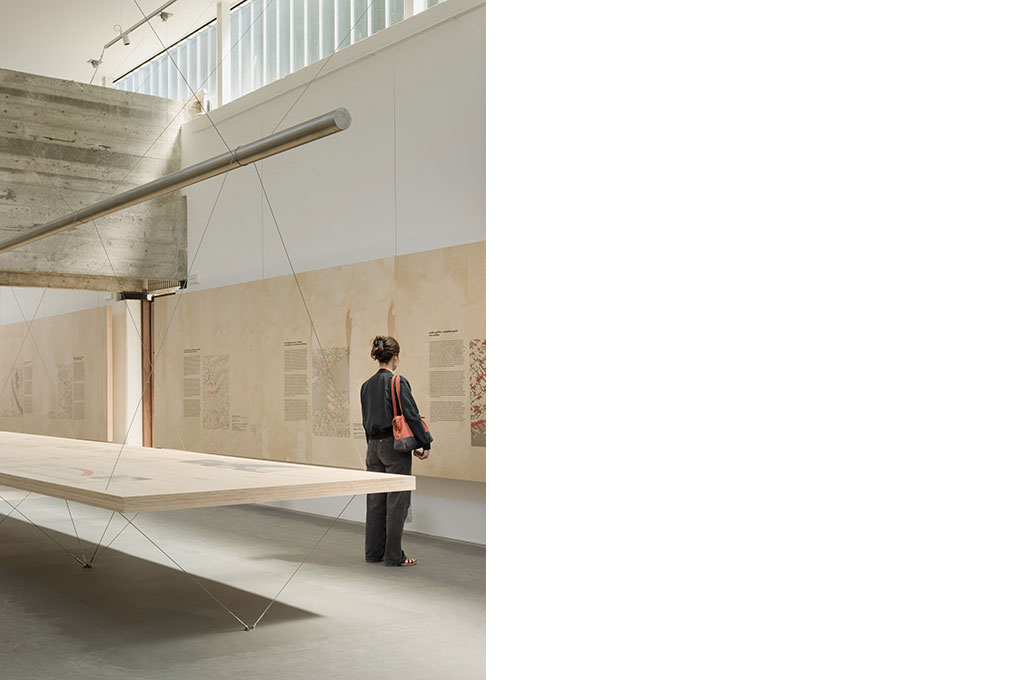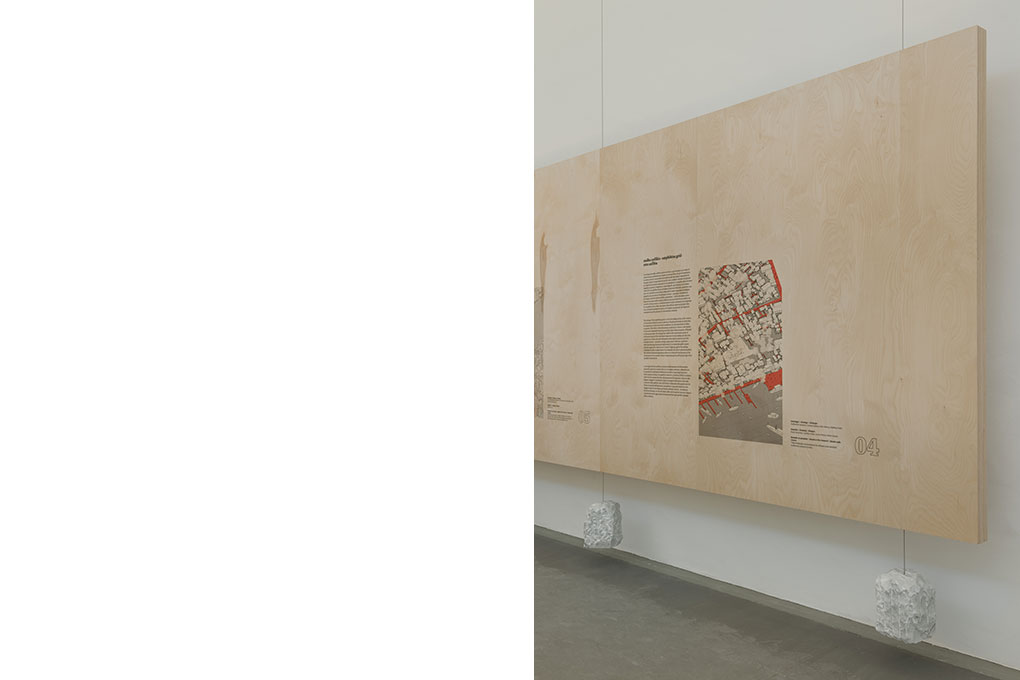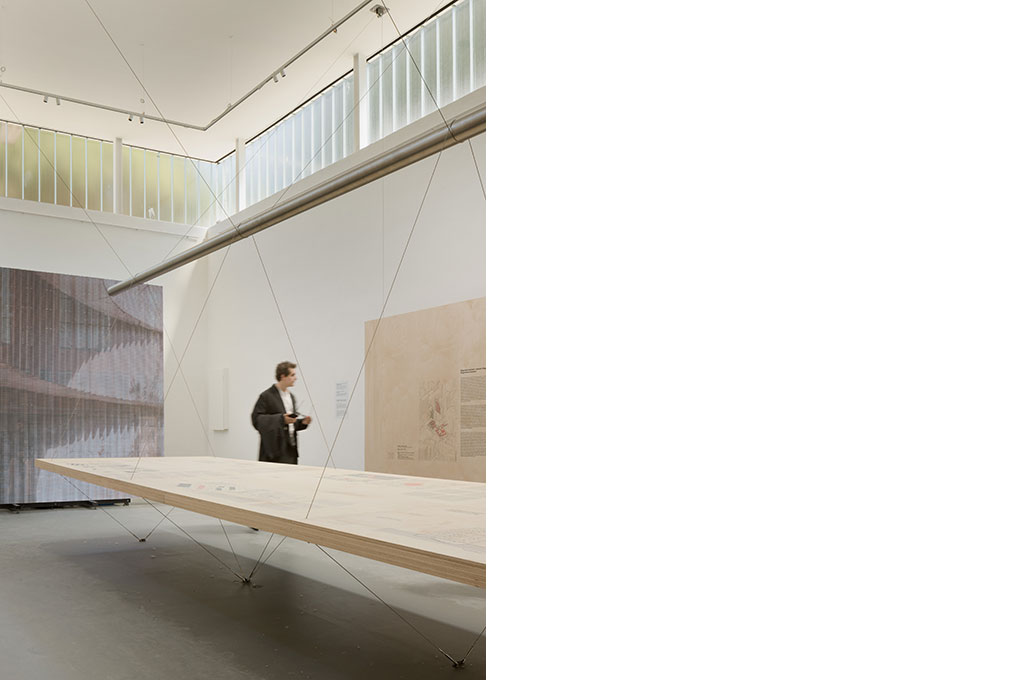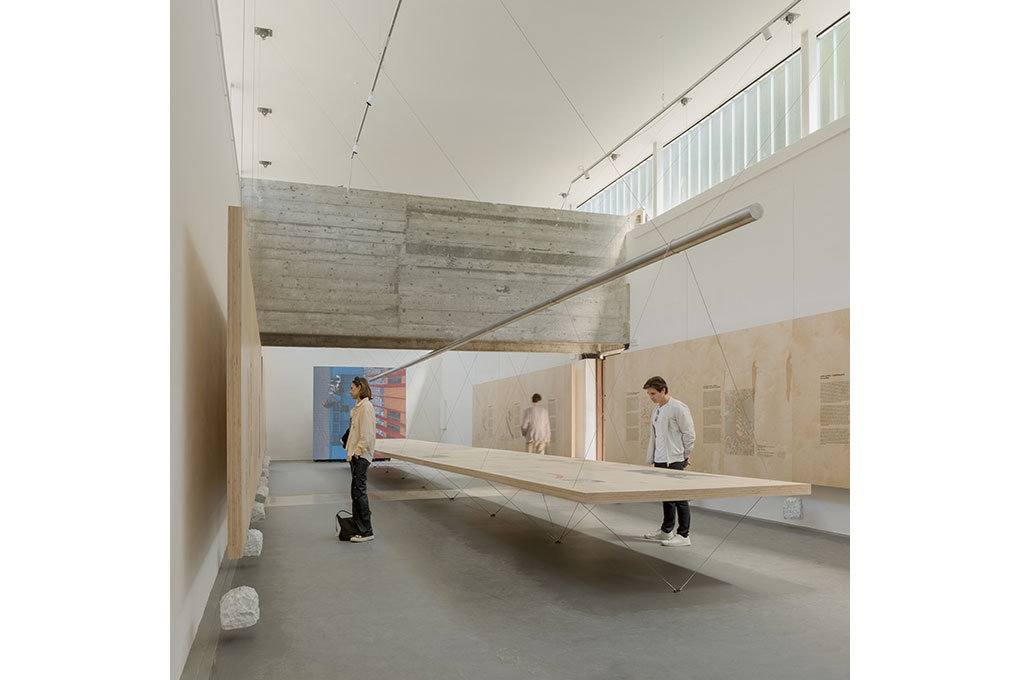Brazilian Pavilion – Venice Biennale 2025
(RE)INVENTION
The curatorial project for the Brazilian representation at the 19th International Architecture Exhibition, La Biennale di Venezia, is rooted in a reflection on recent archaeological discoveries of ancestral infrastructures in the Amazon region. These findings serve as a lens to consider contradictions and question the socio-environmental conditions of contemporary cities. Structured in two acts, (RE)INVENTION builds a narrative that traverses both time and territory.
The first act takes place in the smaller room of the Brazil Pavilion and brings to light narratives of ancestral Brazil. Drawing from recent archaeological studies in the Central Amazon, it invites us to rethink the actual age of Brazil’s “inhabited forest.” Around 10,000 years ago, during the long Holocene period, Indigenous peoples settled in the lowlands of South America and shaped the landscapes around them, creating sophisticated infrastructures that combined technical knowledge and environmental adaptation strategies. This occupation is as ancient as that of other Amerindian peoples. Through the manipulation of soil, earthworks, embankments, retaining walls, and large-scale structures, these communities created spaces capable of supporting thousands of inhabitants. The resulting anthropogenic changes established adaptations in nature and gave rise to new landscapes. Thus, the Amazon forest can be understood as the result of a balanced coexistence between humans and nature.
The second act, located in the pavilion’s larger room, presents design strategies that challenge everyday life in pursuit of social equity and ecological balance in contemporary Brazil, a country shaped by a natural and urban heritage of exceptional richness, born from promises of development and the desire for cultural emancipation. The focus here is on recognizing and valuing “embedded” design strategies and operations within an ingenious body of existing, inherited, and appropriated works. This is our “inherited infrastructure” complex, yet unequal; useful, yet limited. Rather than reviving the image or aesthetic principles of exemplary projects from the past, the intention is to update the issue, suspend it for reflection, consider contradictions, and question the socio-environmental conditions of today’s cities. This opens possibilities for learning and action to face future challenges. What lessons, in terms of relevance and meaning, can we draw from the relationship between this built infrastructural heritage and the natural heritage?
The Brazil Pavilion in Venice was recently restored through a renovation project by Arquitetos Associados and Henrique Penha, part of the curatorial strategy for the 17th International Architecture Exhibition. Designed in 1960 by architects Henrique Mindlin, Giancarlo Palanti, and Walmir Amaral, the pavilion consists of two exhibition rooms with distinct characteristics. The smaller room features floor-to-ceiling glass panes facing side terraces. In contrast, the larger room has no openings at eye level; instead, natural light enters through high translucent U-glass windows that wrap around the space.
Exhibition Installation Concept
The exhibition space was conceived by the curatorial team using minimal elements that take advantage of the Brazil Pavilion’s structure to reconfigure its interior spaces. In the first room (first act), all installation elements rest on the ground. In the second room (second act), the installation is built through a system of suspended wooden panels, stones used as counterweights, and steel cables. This creates a network of action and reaction forces that keep the structure suspended and stable. As a result, the installation materials can be easily disassembled or recycled for other purposes after the exhibition.
The display system in the second room is composed of horizontal panels and a table made of reforested plywood, all connected by tensioned steel cables. Load balance is achieved through Carrara marble counterweights, suspended by cables running through pulleys fixed to the ceiling and anchored to a floor-mounted bracket. Load transmission is ensured by two steel cables per panel assembly, which intertwine at a central metal tube that distributes the tension forces and stabilizes the structure. The lower cable’s tension redirects vertical reactions to the floor bracket, allowing the table to balance horizontal forces through compression. Suspended, the table and panels form a new structure and redefine the spatial experience of the room. The Carrara marble used as counterweights was hand-chiseled by a local sculptor from larger blocks, reduced to a maximum weight of 25 kg per piece.
In general, the design of the installations in both rooms stems from the idea of redefining the notion of infrastructure as both a mode of inhabiting (from Latin structura) and a system (from Greek systēma)—an organized whole composed of parts that seek balance between culture and nature. The coexistence inherent in the ancestral occupation of the Amazon territory inspires a dialogue about existing strategies in contemporary cities—design actions that embody the art of effectively applying available resources.
Curators – Plano Coletivo
Luciana Sabioa (FAU-UnB), Eder Alencar (ARQBR), and Matheus Seco (BLOCO Arquitetos)
Collaborators – Plano Coletivo
André Velloso (ARQBR), Carolina Pescatori (FAU-UnB), Cauê Capillé (FAU-UFRJ), Daniel Mangabeira (BLOCO Arquitetos), Guilherme Lassance (FAU-UFRJ), Henrique Coutinho (BLOCO Arquitetos), Sérgio Marques (FAU-UFRGS)
Local Architect (Italy): Eiletz Ortigas
Installation Execution: Creative Up Interiors
Structural Engineering Consulting: Maratá Engenharia
Installation Design Team: Mariana Castro, Victor Itonaga
Content Production Team: Carolina Guida, Isadora Furtado, Isaac Alencar, Jéssica Duarte, João Magnus, Leonardo Nóbrega, Lucas Bandeira, Lucas Freitas, Lucas Marques, Luíza Ceruti, Marcela Peres, Paulo Honorato, Pedro Cardoso, Victor Suarez
Graphic Design – Panels: Lia Tostes
Brazilian Pavilion – Venice Biennale 2025
(RE)INVENTION
The curatorial project for the Brazilian representation at the 19th International Architecture Exhibition, La Biennale di Venezia, is rooted in a reflection on recent archaeological discoveries of ancestral infrastructures in the Amazon region. These findings serve as a lens to consider contradictions and question the socio-environmental conditions of contemporary cities. Structured in two acts, (RE)INVENTION builds a narrative that traverses both time and territory.
The first act takes place in the smaller room of the Brazil Pavilion and brings to light narratives of ancestral Brazil. Drawing from recent archaeological studies in the Central Amazon, it invites us to rethink the actual age of Brazil’s “inhabited forest.” Around 10,000 years ago, during the long Holocene period, Indigenous peoples settled in the lowlands of South America and shaped the landscapes around them, creating sophisticated infrastructures that combined technical knowledge and environmental adaptation strategies. This occupation is as ancient as that of other Amerindian peoples. Through the manipulation of soil, earthworks, embankments, retaining walls, and large-scale structures, these communities created spaces capable of supporting thousands of inhabitants. The resulting anthropogenic changes established adaptations in nature and gave rise to new landscapes. Thus, the Amazon forest can be understood as the result of a balanced coexistence between humans and nature.
The second act, located in the pavilion’s larger room, presents design strategies that challenge everyday life in pursuit of social equity and ecological balance in contemporary Brazil, a country shaped by a natural and urban heritage of exceptional richness, born from promises of development and the desire for cultural emancipation. The focus here is on recognizing and valuing “embedded” design strategies and operations within an ingenious body of existing, inherited, and appropriated works. This is our “inherited infrastructure” complex, yet unequal; useful, yet limited. Rather than reviving the image or aesthetic principles of exemplary projects from the past, the intention is to update the issue, suspend it for reflection, consider contradictions, and question the socio-environmental conditions of today’s cities. This opens possibilities for learning and action to face future challenges. What lessons, in terms of relevance and meaning, can we draw from the relationship between this built infrastructural heritage and the natural heritage?
The Brazil Pavilion in Venice was recently restored through a renovation project by Arquitetos Associados and Henrique Penha, part of the curatorial strategy for the 17th International Architecture Exhibition. Designed in 1960 by architects Henrique Mindlin, Giancarlo Palanti, and Walmir Amaral, the pavilion consists of two exhibition rooms with distinct characteristics. The smaller room features floor-to-ceiling glass panes facing side terraces. In contrast, the larger room has no openings at eye level; instead, natural light enters through high translucent U-glass windows that wrap around the space.
Exhibition Installation Concept
The exhibition space was conceived by the curatorial team using minimal elements that take advantage of the Brazil Pavilion’s structure to reconfigure its interior spaces. In the first room (first act), all installation elements rest on the ground. In the second room (second act), the installation is built through a system of suspended wooden panels, stones used as counterweights, and steel cables. This creates a network of action and reaction forces that keep the structure suspended and stable. As a result, the installation materials can be easily disassembled or recycled for other purposes after the exhibition.
The display system in the second room is composed of horizontal panels and a table made of reforested plywood, all connected by tensioned steel cables. Load balance is achieved through Carrara marble counterweights, suspended by cables running through pulleys fixed to the ceiling and anchored to a floor-mounted bracket. Load transmission is ensured by two steel cables per panel assembly, which intertwine at a central metal tube that distributes the tension forces and stabilizes the structure. The lower cable’s tension redirects vertical reactions to the floor bracket, allowing the table to balance horizontal forces through compression. Suspended, the table and panels form a new structure and redefine the spatial experience of the room. The Carrara marble used as counterweights was hand-chiseled by a local sculptor from larger blocks, reduced to a maximum weight of 25 kg per piece.
In general, the design of the installations in both rooms stems from the idea of redefining the notion of infrastructure as both a mode of inhabiting (from Latin structura) and a system (from Greek systēma)—an organized whole composed of parts that seek balance between culture and nature. The coexistence inherent in the ancestral occupation of the Amazon territory inspires a dialogue about existing strategies in contemporary cities—design actions that embody the art of effectively applying available resources.
Curators – Plano Coletivo
Luciana Sabioa (FAU-UnB), Eder Alencar (ARQBR), and Matheus Seco (BLOCO Arquitetos)
Collaborators – Plano Coletivo
André Velloso (ARQBR), Carolina Pescatori (FAU-UnB), Cauê Capillé (FAU-UFRJ), Daniel Mangabeira (BLOCO Arquitetos), Guilherme Lassance (FAU-UFRJ), Henrique Coutinho (BLOCO Arquitetos), Sérgio Marques (FAU-UFRGS)
Local Architect (Italy): Eiletz Ortigas
Installation Execution: Creative Up Interiors
Structural Engineering Consulting: Maratá Engenharia
Installation Design Team: Mariana Castro, Victor Itonaga
Content Production Team: Carolina Guida, Isadora Furtado, Isaac Alencar, Jéssica Duarte, João Magnus, Leonardo Nóbrega, Lucas Bandeira, Lucas Freitas, Lucas Marques, Luíza Ceruti, Marcela Peres, Paulo Honorato, Pedro Cardoso, Victor Suarez
Graphic Design – Panels: Lia Tostes
